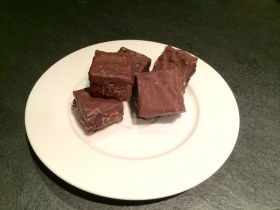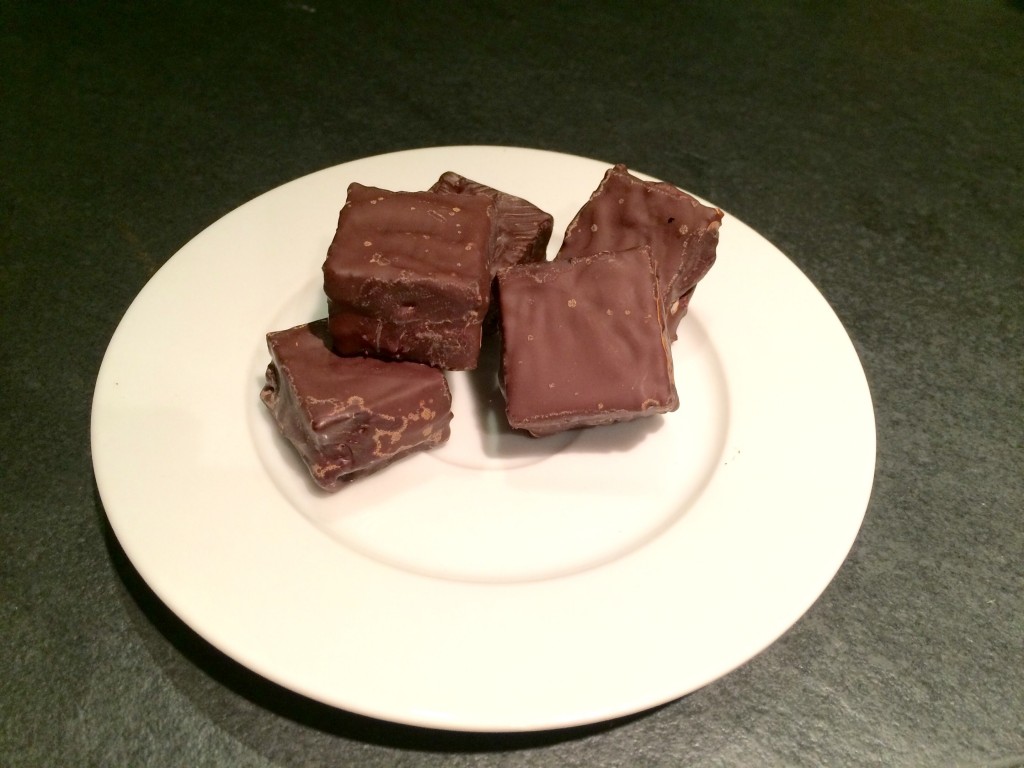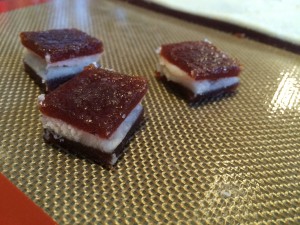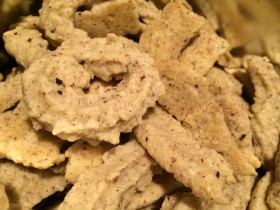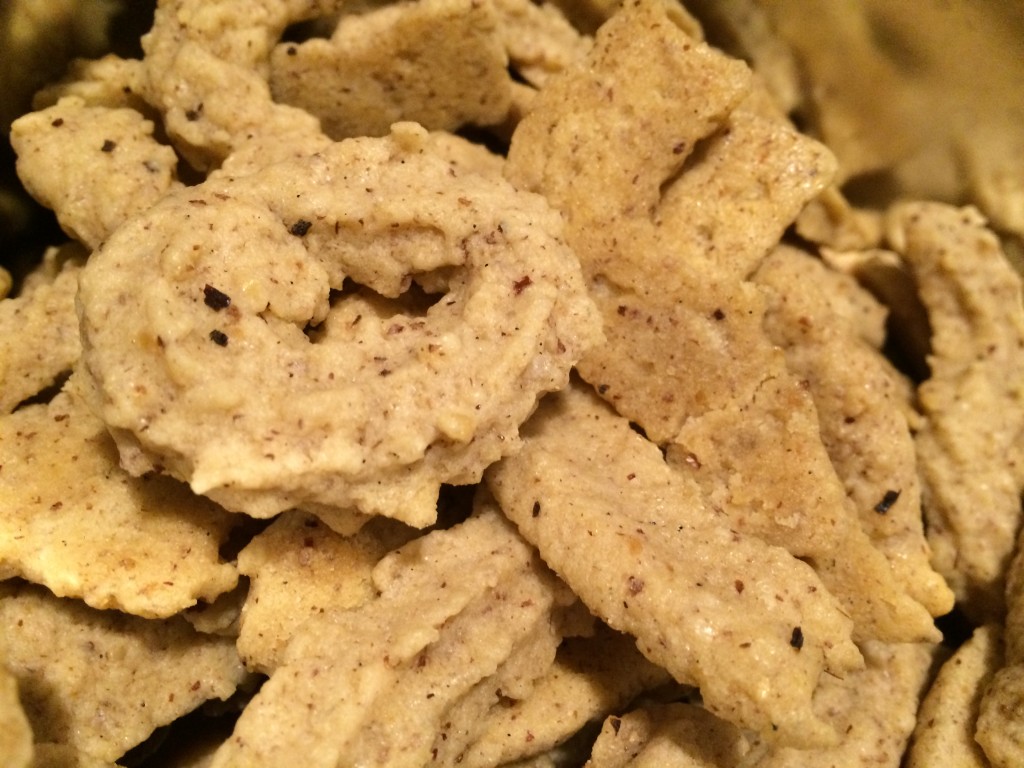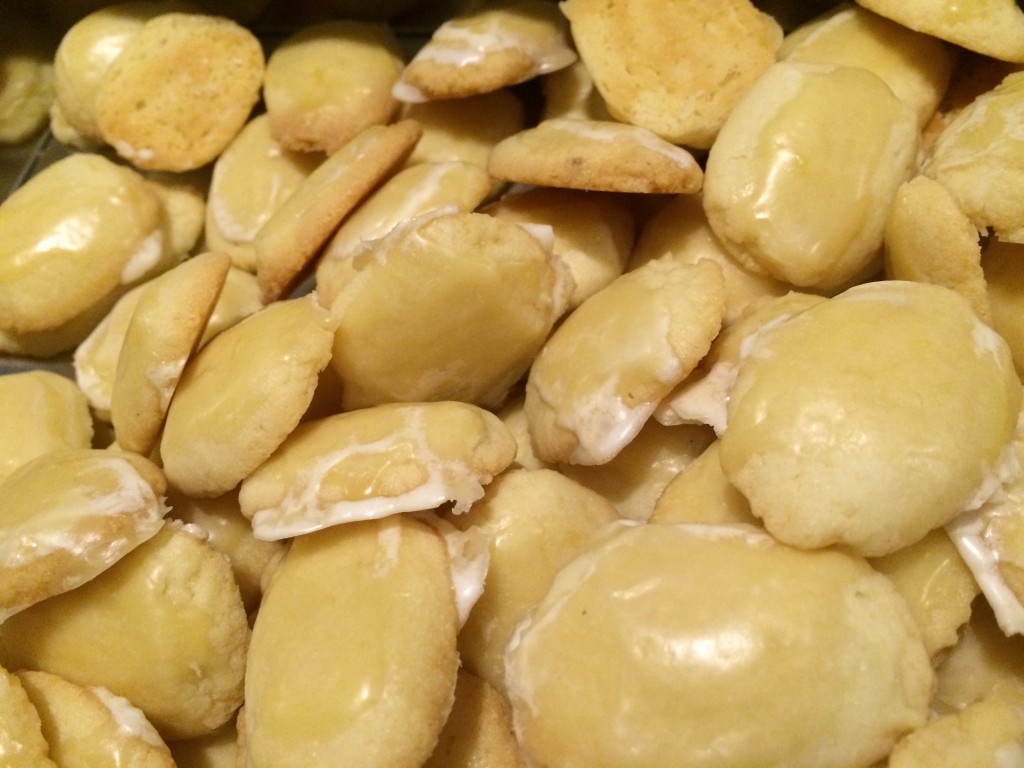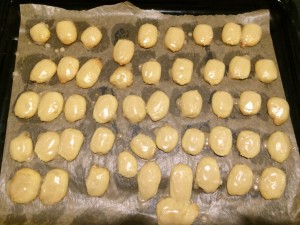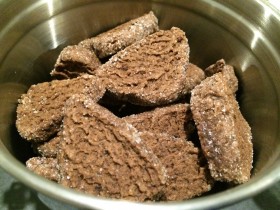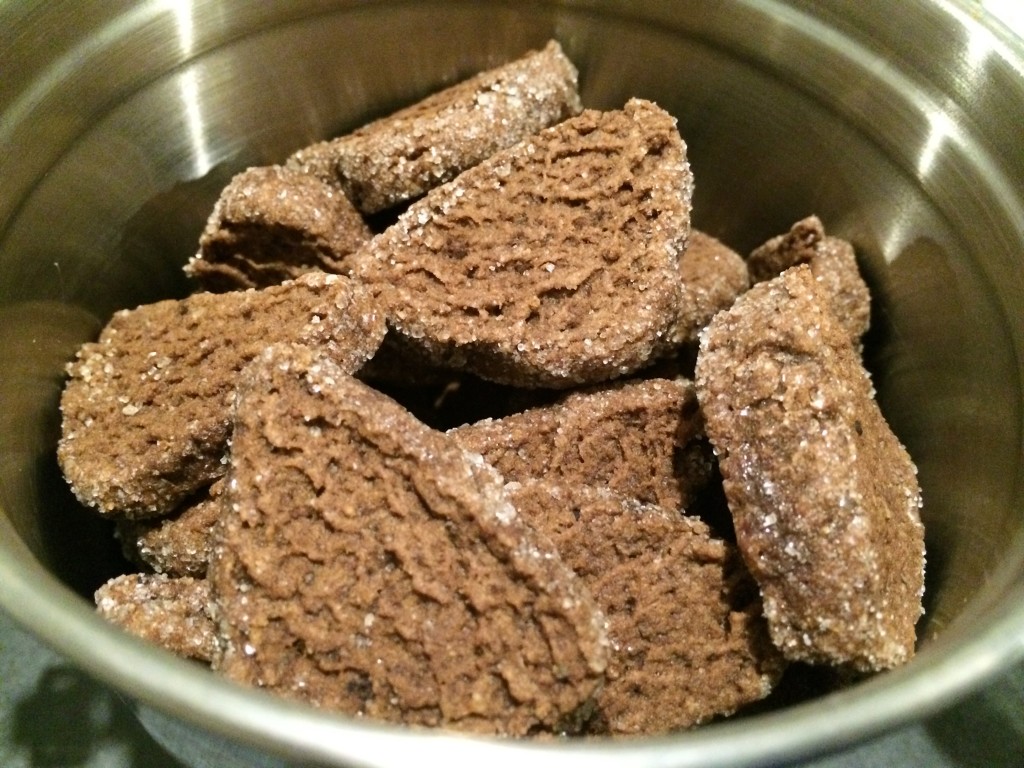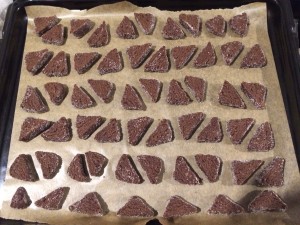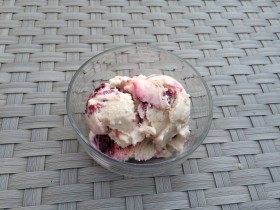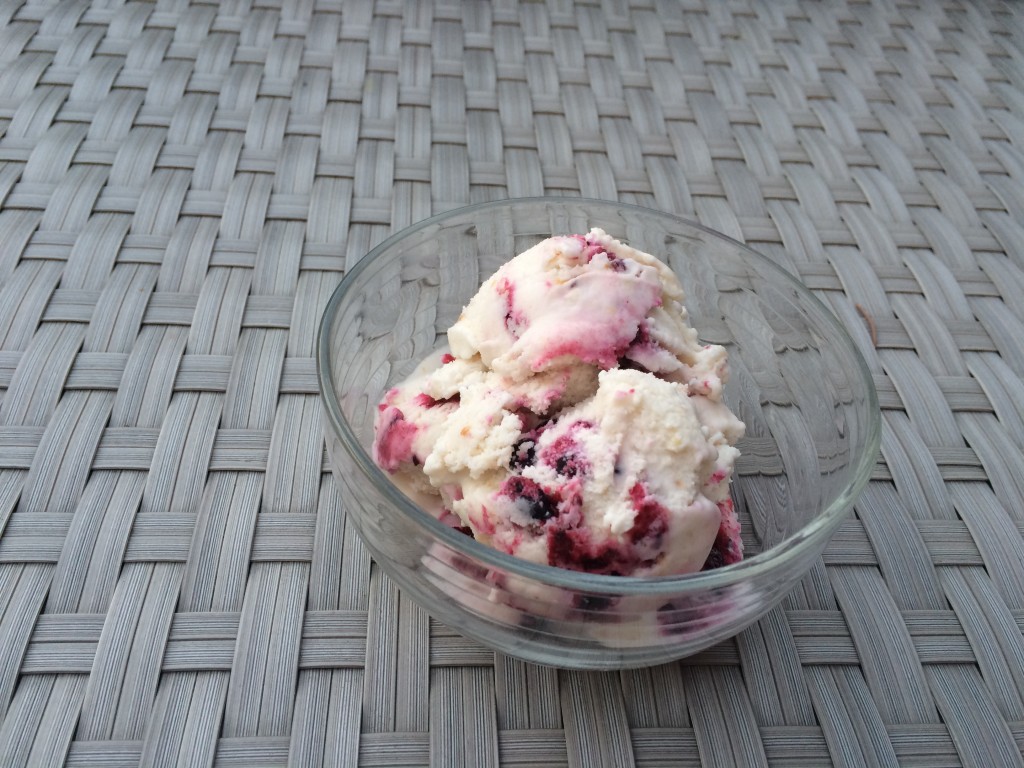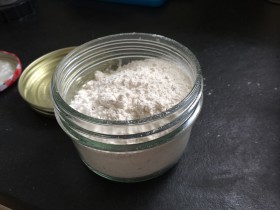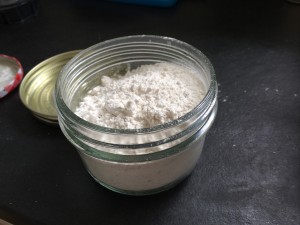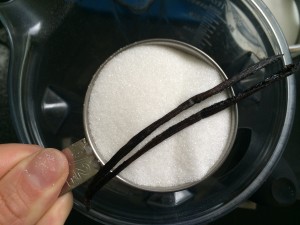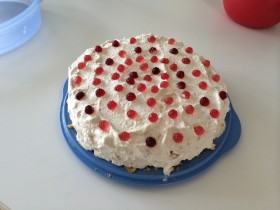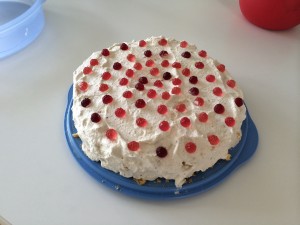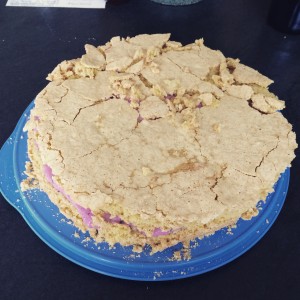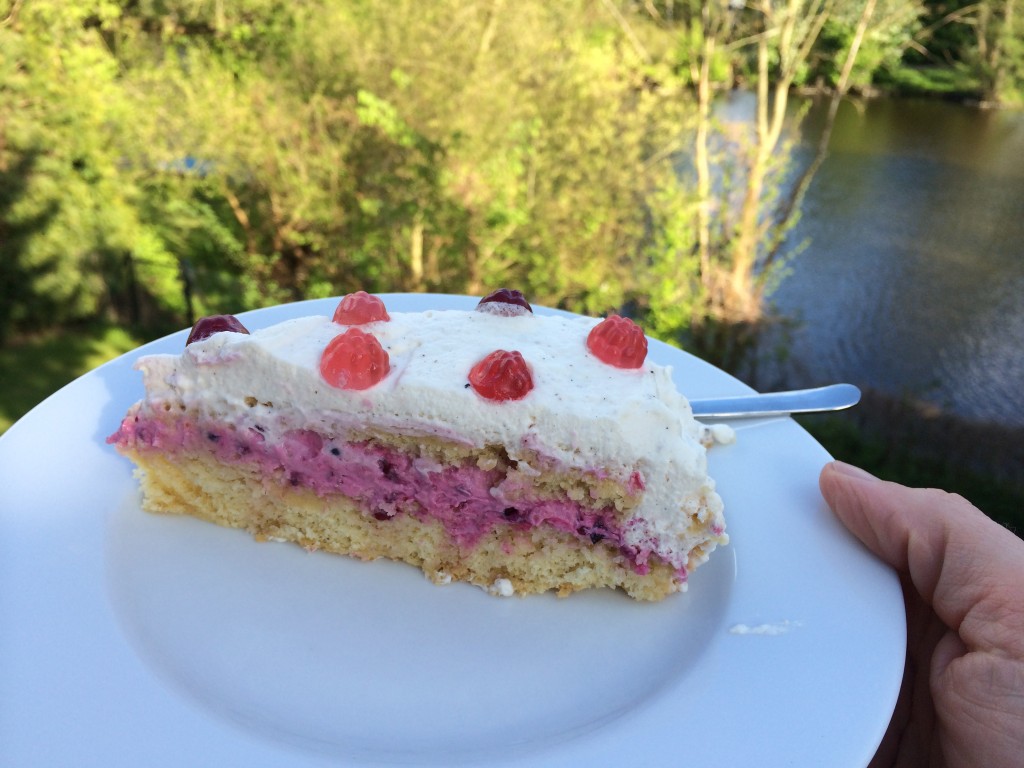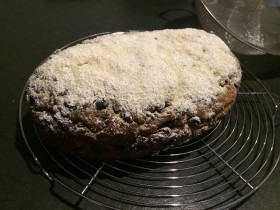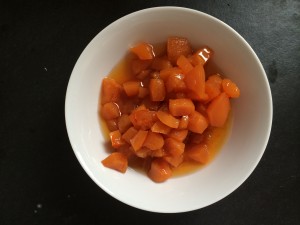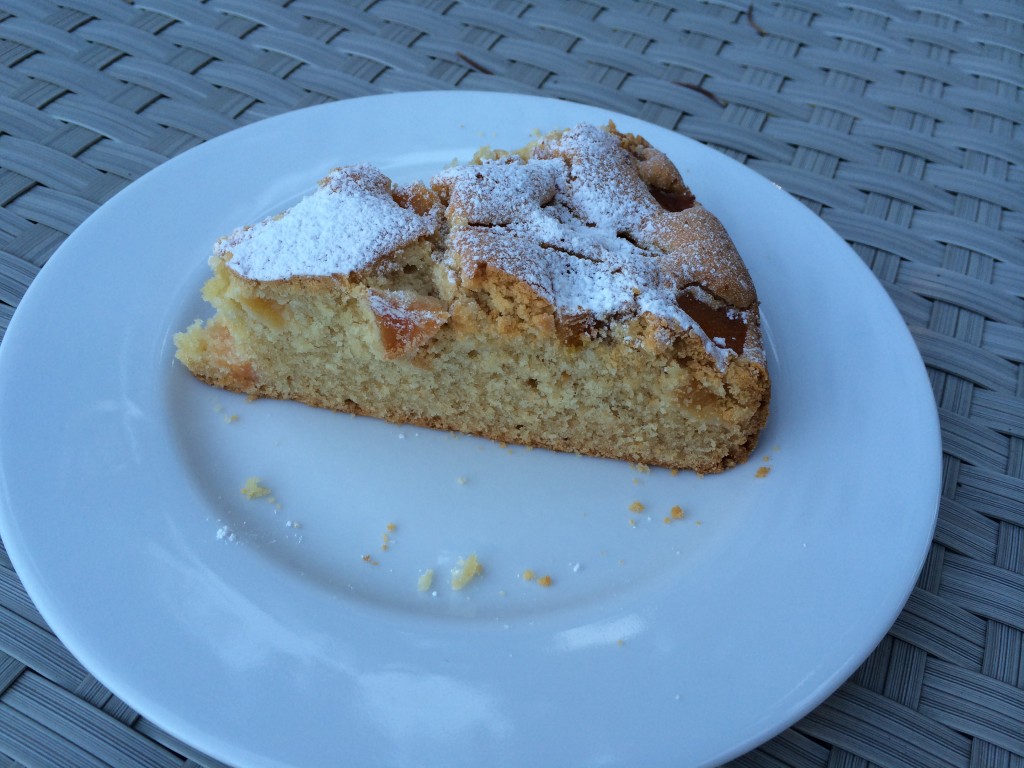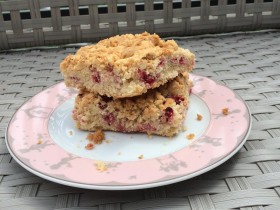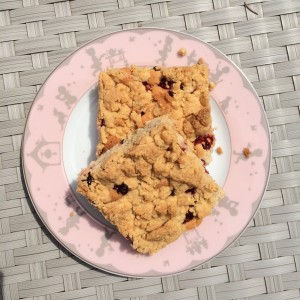A Stollen, also „Christstollen“ is a traditional german fruit cake, made for christmas. I’ve always enjoyed the stollen, made by my friend charlottes mother, so one day I asked for the recipe. And here it is. Last year I tried it for the first time, and it turned out very nice. The recipe isn’t very difficult, but you need some time and loads of raisins and butter/margarine.
The stollen has to sit for a few weeks, so now really is the time to bake it. Traditionally are raisins, currants, candied lemon and orange peel and almond slivers used in the dough, but you can exchange parts of the dried fruit for dried cranberries, aronia or dates. I didn’t have any currants, so I used dates instead.
The recipe is for one (giant) stollen, but charlottes mother already wrote in her recipe, that she divides the dough in two parts for two „normal“ sized stollen.
Ingredients
- 500 g raisins
- 125 g currants
- 250 g almond slivers
- 100 g candied lemon peel
- 100 g candied orange peel
- 1 lemon, grated peel and juice
- 2 small glasses rum (ca. 200 ml)
- 1 kg flour
- 120 g fresh yeast or 6 packets dried yeast
- 175 g sugar
- 1/4 litre lukewarm milk (I used spelt-almond)
- 750 g butter/margarine
- confectioners’/icing sugar
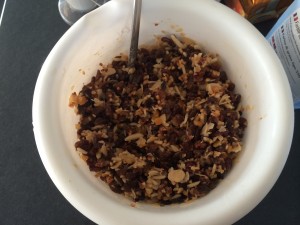 The day before, mix the dried fruit with the almond slivers, add the grated lemon peel. Pour the rum and lemon juice over the mixture and stir. Soak covered overnight, stirring a few times.
The day before, mix the dried fruit with the almond slivers, add the grated lemon peel. Pour the rum and lemon juice over the mixture and stir. Soak covered overnight, stirring a few times.
The next day sieve the flour in a big bowl (usually I skip the sieving part, … don’t know weather it makes a difference). Make a well in the center. Dissolve the yeast in the lukewarm milk with one tbsp sugar, pour it in the well, and carefully mix some of the flour in the yeast-milk mixture with a fork. Cover with a clean towel and let rise in a warm place for 15 min.
Now work all of the ingredients in the bowl very well together, until you get an elastic dough. Mix in the fruit-almond-mix and knead until everything is evenly mixed, cover and let rise again for 30 min. I did it in my kitchen aid, the bowl was really full, but it worked.
Preheat the oven to 200°C. Halve the dough and shape into stollen. The recipe describes it as follows:“roll out quite thick, press the rolling pin into the pin to form a longish cavity and fold one half over the other.“
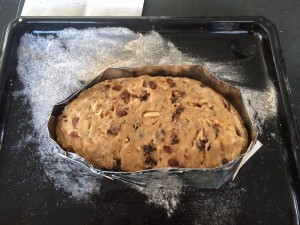 Put every stollen on a greased, floured baking sheet and wrap with a collar, made out of folded aluminium foil. Let it rise covered for the last time for 15 min. Bake in the oven one after the other for 90 min. Check after 30 min, if the top browns too fast. Cover with aluminium foil if it does.
Put every stollen on a greased, floured baking sheet and wrap with a collar, made out of folded aluminium foil. Let it rise covered for the last time for 15 min. Bake in the oven one after the other for 90 min. Check after 30 min, if the top browns too fast. Cover with aluminium foil if it does.
Check for hte first time after 60 min with a wooden skewer, inserted into the stollen. If it comes out clean, the stollen is done. If there are crumbs on the skewer, check again after 15 min until done.
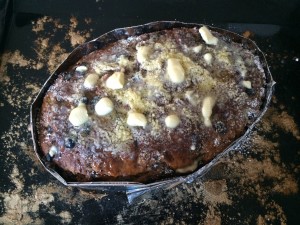 Remove from the oven and spread with butter/margarine and sieve loads of icing sugar on top. Repeat after 15 min. This will make a kind of glazing.
Remove from the oven and spread with butter/margarine and sieve loads of icing sugar on top. Repeat after 15 min. This will make a kind of glazing.
Cool the stollen completely, then wrap it in aluminium foil and store it for at least two weeks. Mine ary waiting in the cupboard right now :-)
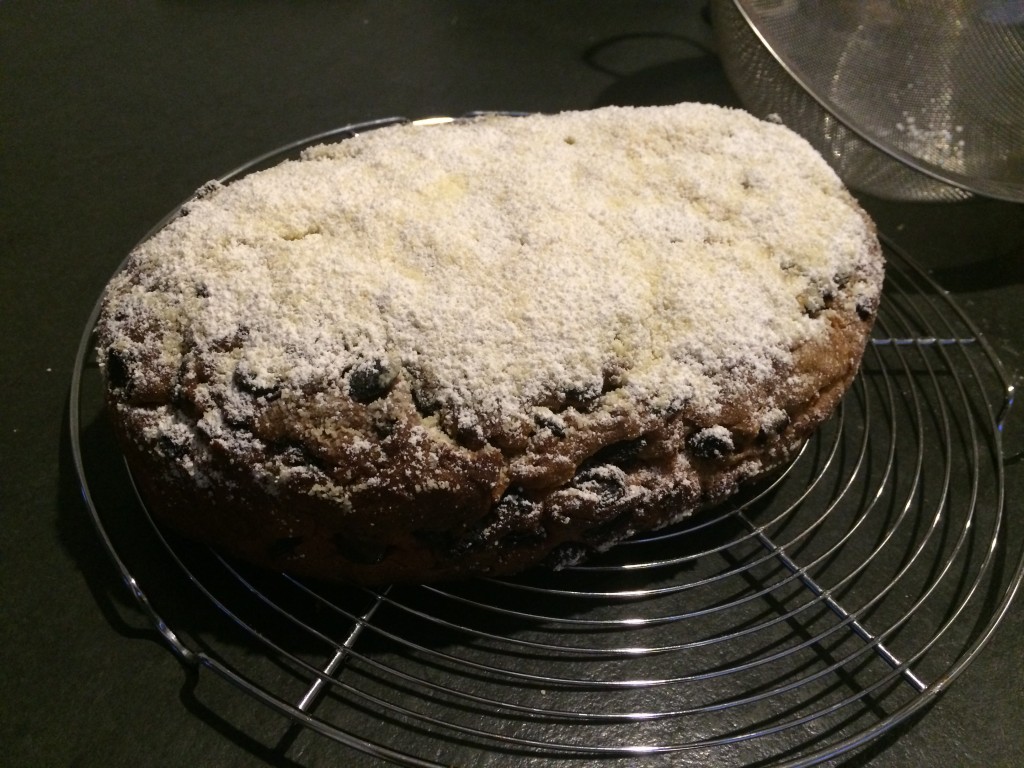
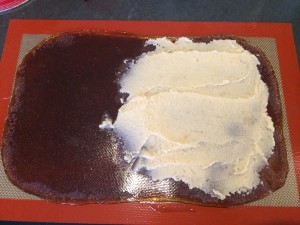 Knead the marzipan with the icing sugar and the rose water into a homogeneous paste.
Knead the marzipan with the icing sugar and the rose water into a homogeneous paste.